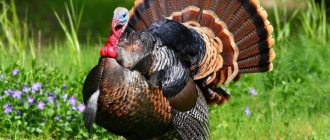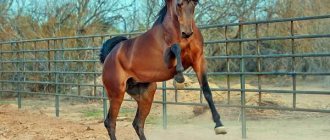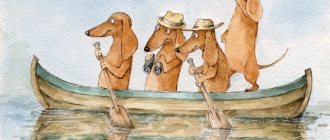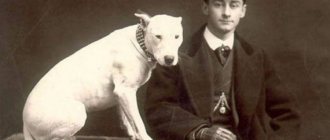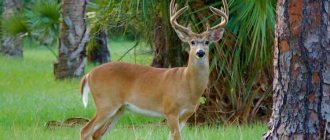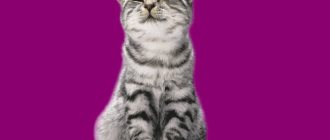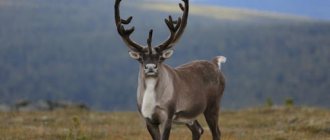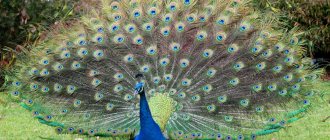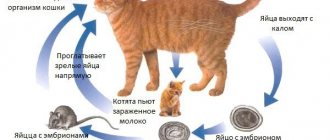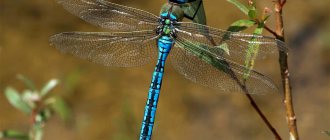A draft horse is a real hard worker, capable of withstanding the most intense physical activity. In everything - from appearance to behavior - she demonstrates sedateness and unhurriedness.
However, the characteristics of the Soviet, Belgian, French and other heavyweight breeds are still not so clear in their definition.
Beautiful large animals easily cope with the transportation of goods, and with arable work in the fields, and with overcoming obstacles. Their gigantic growth, pronounced muscles, and massive body look very impressive.
Origin
Photo:
The concept of a “heavy horse” first appeared many centuries ago, in the Middle Ages, when there was a particularly strong need to breed horses capable of carrying warriors in heavy armor.
It was they who took part in knightly tournaments and campaigns, and brilliantly coped with this important task.
In addition, beautiful and strong animals, called “destrie” in those days, accompanied their owners on campaigns and were good companions for them when moving long distances.
What was the average weight of a horse in those days? The ancestors of modern heavy draft horses reached a weight of 800–1000 kg with a height of up to 200 cm. Of course, a horse with such dimensions was not able to successfully maneuver or easily take hurdles.
In addition, under load, destrie quickly tired and could not provide long-term forward movement as successfully as their lighter “colleagues.”
Many horse breeds are considered to be modern descendants of the medieval destrie. The most famous of them are the Belgian Brabançons, the French Percherons and the Shires used in the UK.
It is the English breed of heavy trucks that holds the record for the weight and height of an individual. A Shire stallion, born back in 1846, was recorded to have a height at the withers of 220 cm and weigh more than one and a half tons.
In Russia, due to the abundance of arable land, its own genealogical branch of heavy trucks has developed. The formation of the breeds began at the turn of the 19th and 20th centuries on the basis of local draft horses and Ardennes imported from Belgium.
The characteristic disharmony of the European variety of draft horses was eliminated under the influence of breeding work. The bred type of horses was distinguished by a strong, beautiful build and impressive exterior.
This approach had a beneficial effect on the reputation of the future breed - it was able to win more than one prize at world and international exhibitions.
Summary
Even if not everyone is familiar with the name of the breed of draft horses, it is impossible to confuse them with photographs of riding horses: the strength and stature of these animals have become features of their exterior. What these horses lack in grace, they make up for with the benefits they can bring to the farm. Today, heavy trucks are not used as widely as a century ago, but there is work for them too:
- logging in areas inaccessible to machinery;
- land cultivation;
- transportation of goods;
- hunting trips;
- working with groups in hippotherapy classes;
- improvement of the gene pool of the local horse population.
Large heavy trucks are also used as meat breeds.
The demand for draft horses remains. Selectors and breeders continue to work with large animals. Such a horse becomes an indispensable assistant for a farmer. Today, out of 250 breeds of horses bred at state and private stud farms, 40 are heavy draft horses.
Description
Photo:
Depending on the breed, the characteristics of heavy trucks vary. But there are some common signs. All heavy draft horses are walking horses, not oriented towards high-speed movement.
They are characterized by the following signs:
- short muscular neck;
- back of medium length with a pronounced muscle pattern;
- dry, strong legs;
- wide croup;
- average weight in the range of 0.8-1 t;
- height from 1.6 to 2.0 m.
The typical gait for heavy trucks is the walk. Nevertheless, such a horse may well demonstrate agility over a short distance.
Some breeds are even capable of jumping over obstacles - this skill is possessed by the Irish draft horse, which is quite light but strong.
Percheron
Percherons are natives of France at the beginning of the 19th century. The French managed to cross local draft horses with Arabian horses. The main goal of such crossing is to obtain a fast horse capable of transporting heavy loads.
Main exterior characteristics of Percherons:
- height at withers - 1.75 m;
- weight - 0.8–0.9 t;
- head - wide with a straight profile;
- neck - long;
- the thoracic region is wide, reaching 2 m in girth;
- back - elongated;
- limbs - strong, with developed joints, no brushes on the forelimbs;
- mane - lush, beautiful;
- color - gray, sometimes black;
- character - energetic, good-natured, obedient, non-capricious.
Advantages:
- excellent adaptation to any living conditions;
- strong immune system;
- the ability to withstand heavy loads for a long time without rest;
- ability to graze on pasture all year round.
There are no disadvantages.
Purpose
An important difference between heavy draft horse breeds is the clearly traceable inheritance of ancestral traits. In addition, animals have not lost their purpose.
Just like centuries ago, today such horses successfully transport goods where there are no access roads familiar to modern city dwellers. They can be found harnessed to a gypsy wagon or seen in a field harnessed to a plow.
These beautiful animals remain in demand in the rental industry or when teaching horse riding - due to their low speed, they are suitable even for beginners.
And in agriculture, they are indispensable when grazing livestock and allow the shepherd to move in the same rhythm with the herd.
Usage
In former times, heavy-duty horses were used to transport heavy loads and perform agricultural work, faithfully helping peasants. And although in the modern world, with technology and powerful equipment, the need for powerful horses has disappeared, representatives of heavy draft breeds are still popular. Their native countries are proud of their “heavyweights”; the horses are groomed and cherished, trying to preserve the breed lines.
Now animals are used for the following purposes:
- for transporting goods in rural areas;
- for the production of dairy and meat products;
- as circus and show performers;
- in tourism;
- the best representatives are used in breeding work.
Each breed of draft horse has individual qualities and is good in its own way. Despite their gigantic size, heavy trucks are good-natured creatures whose main goal is to help their owner by performing difficult work. Therefore, now the main task of modern breeders is the preservation of heavy draft breeds.
Breeds of draft horses
A heavyweight among racing horses looks overly massive. However, surrounded by his own kind or just on a walk, he is magnificent.
Today, dozens of breeds are known, the heavy characteristics of which do not need confirmation. It is worth considering the most popular of them in more detail.
Brabançon
Belgian horse breeds are traditionally considered the ancestors of all modern heavy draft horses.
This draft power has been used in Europe since the Middle Ages. The Flanders horse or Brabançon is a breed bred in Belgium and has retained its characteristic features for centuries.
Animals are considered to be long-lived, have an easy disposition, are obedient, and easily adapt to not the most comfortable living conditions.
The average height of the animal is 1.7 m , it is characterized by a red or roan-bay color, with a touch of red. Powerful muscles shimmering under the skin look very impressive.
Shire
Even among heavy draft horses, the Shire breed, bred in Great Britain, is considered large. The typical knight's horse here was not bred for centuries to plow the land.
This mission was entrusted to the Shires only in the 18th century, and since then they have been considered farm animals.
The power of the physique, the massiveness of the body, the high strength and speed indicators characteristic of the breed, even today do not allow interest in it to fade away.
A typical modern Shire grows up to 185 cm at the withers and can weigh over 1200 kg.
Its characteristic colors include the entire palette of colors: from bay to gray. The largest draft horses are still successfully used by English farmers today for transporting goods and traversing land.
Australian heavy truck
One of the lightest heavyweight horse breeds among existing ones. Her selection united many bloodlines - it is reliably known about the participation of Clydesdales, Percherons, Shires and Suffolks.
The resulting horse acquired a gentle disposition, compact size, not too lush mane, tail and hair on the legs.
Australian heavy trucks grow above 170 cm and weigh 0.6-0.8 tons. The color of the animal is uniform or spotted, with a predominance of red-brown.
Vladimir heavy truck
Considering Russian horse breeds, one cannot help but note the product of selection by Vladimir horse breeders. The horse they obtained has a color from red to black, high height - from 165 cm at the withers, an average weight of 750 kg.
A dense body with pronounced muscles emphasizes the strength and grace of this animal. Clydesdales and Shires were involved in the selection of Vladimir heavy draft horses, which introduced the presence of white spots into their color and contributed to the formation of abundant fur on the legs.
A distinctive feature of the breed is its high adaptability. They are able to live both in a herd and in a stud farm, they are sociable, and easily get used to people. In terms of its trotting qualities, mobility, and speed of movement, the Vladimir draft horse is ahead of other breeds.
That is why they are considered one of the best candidates for improving the gene pool and are actively used as producers.
Boulogne
The popular French breed, which once developed in two directions, is today represented only by a large subspecies, which, however, does not lose its grace and attractiveness.
Boulogne heavyweights are incredibly graceful for their size, and they grow up to 170 cm with a weight of 0.7-0.9 tons. Expressive eyes, a lush mane and rich furring of the legs, an elegant forehead line make the breed unique precisely in its exterior qualities.
In addition, in France it is actively used to participate in harness racing, due to its ability to move to a trot and good running qualities.
Clydesdale
The Clydesdale is a Scottish heavyweight, easily able to demonstrate riding and pulling qualities in competitions.
Horses of this breed have powerful bones, are muscular and hardy. There are various colors of Clydesdales - from black to bay, you can see gray and red horses.
But this breed can be classified as one of the most whimsical. Animals are very sensitive to living conditions and require high-quality feed.
Percheron
The heavyweight, distinguished by its harmonious physique and very impressive dimensions, was bred thanks to the use of Arabian horse blood in its selection.
Percherons are real record holders in terms of height and weight; the largest individuals reach 2 m at the withers or more. Racing genes make these horses quite fast and resilient, they easily cover long distances even with a load or under saddle.
The appearance of the Percherons also deserves attention. They have a massive muscular body, athletic dry limbs, a large head with an elegant profile pattern, and a long neck.
The average weight of a horse is about 900 kg, most are around 175 cm tall, giant specimens are not uncommon, but are still considered rather an aberration. Modern representatives of the breed have virtually no hair on their legs.
By their nature, Percherons are quite pleasant, easy to train, and have an energetic temperament.
If you direct their energy in the right direction, you can get a hardy assistant on the farm, capable of trotting even with a load weighing more than 1 ton.
Their high intelligence makes Percherons an excellent choice for participation in circus shows around the world.
Suffolk
The English breed of horses, bearing the name of the county where its selection was carried out for many years, belongs to the representatives of the compact line of heavy draft horses.
Suffolk dogs are compact in size, easy-going in nature, and attractive in appearance.
They are characterized by a variety of colors - from lemon and gold to rich chestnut; there are white markings in the form of a “star” on the forehead and neat “socks” on the legs.
Their small size makes the Suffolk an ideal choice not only for herding livestock, but also for hippotherapy, the circus arena or equestrian sports.
South German heavy draft
The German draft horse is distinguished by its short stature and a small range of colors - bay, game, brown.
In the blood of the South German breed you can find an admixture of genes from Clydesdales, Holsteins, and Austrian Norikens. The original name of the breed was Pinzgauer, but today it is the modern version that is used more often.
The animals are distinguished by a beautiful running pattern, strong limbs, a compact muscular body and a high level of mobility. These Bavarian horses are used mainly in agriculture.
Soviet heavy truck
Harmonious in appearance, heavy trucks with strong legs and a dense body. There are three types - from lightweight, with a dry physique, to massive.
Stallions grow up to 168 cm, and the most common colors are red and brown.
The breed is not whimsical, is successfully kept both in factories and in herds, and is distinguished by excellent strength indicators. Even the harsh Siberian climate does not bother them - the horse is well maintained even in conditions of prolonged cold.
Gypsy Tinkers
One of the youngest breeds of draft heavy trucks - it was recognized only in 1996.
Gypsy heavyweights are represented mainly by the Grand Gypsy class, growing up to 1.55 m and increasing in weight up to 700 kg.
Strong, muscular horses have a thick neck with a beautiful curve, a beard, pronounced friezes on the legs, thick bangs, a mane and a tail.
These horses are characterized by an X-shaped position of the hind legs, piebald color, with a pronounced tendency towards calico or tobiano color. Good character has made Tinkers popular in the horse riding industry.
Bityug
The Voronezh, Russian draft horse is all the descendants of the typical Bityug, a now completely extinct breed, once created by crossing local horses with Clydesdales and Brabançons.
Strong, massive, they demonstrated excellent endurance when transporting goods and performing agricultural work.
Arden horse
These odd-toed ungulates were known even under Julius Caesar. At the beginning of the twentieth century, they were used in military conflicts, for transporting artillery pieces and in cavalry.
Later, their abilities were useful in agriculture and equestrian sports. These horses are also used for horse meat production.
Exterior Features:
- height at withers - 1.6–1.62 m;
- weight - 0.7–1 t;
- the head is heavy with a wide, low forehead and a slightly convex profile;
- neck - medium length;
- thoracic region - characterized by depth;
- the back is shortened, with a muscular lower back;
- limbs - strong, with strong joints;
- mane - lush;
- color - red, bay, raven-gray, bay-roan, with white spots in the shape of a star;
- character - submissive, unpretentious, soft.
Advantages:
- high productivity of meat products;
- performance;
- survivability;
- high load capacity;
- unpretentiousness to feed and care activities.
No disadvantages have been identified in the breed.
Novoaleksandrovsky heavy truck
This breed is the work of Ukrainian horse breeders who were engaged in improving Russian heavy trucks. Approved in 1948. It contains the genes of Arden, Brabançon, and Percheron.
Description of the breed's exterior:
- height at withers - 1.48–1.49 m;
- weight - 0.56–0.59 t;
- the head is lightweight with an elongated muzzle and a humpbacked profile;
- neck - shortened, wide, massive;
- back - massive;
- limbs - short, strong, dry, correctly positioned;
- tail - lush, wavy;
- mane - curly;
- color - savrasaya, black, roan, brown, with white spots on the face and limbs;
- character - balanced, energetic.
Advantages:
- traction power;
- strong immune system;
- excellent fertility;
- excellent milk performance.
The disadvantage is that they are picky about what they feed.
Irish
The national Irish draft horse is widespread throughout the UK. The unpretentiousness of horses allowed even the poor to own them.
Horses of the Irish breed are smart, quick-witted, and can do any kind of work. Height – 150-160 centimeters. Strong harmonious body. Colors – bay, red, gray. They were used as riding horses.
Russian
The process of creating the breed lasted quite a long time - from the end of the 19th to the beginning of the 20th century, with the participation of many breeds, in particular, of Belgian and French origin. The name of Russian heavy trucks was registered in 1952.
Horses have the following characteristics:
- height at withers - 1.5–1.53 m;
- weight - 0.6–0.7 t;
- the head is light, with an elongated dry muzzle, a wide forehead;
- neck - wide, short, massive, muscular;
- thoracic region - characterized by depth, barrel-shaped;
- the back is elongated, powerful, with a straight lower back;
- limbs - medium in height, dense, elastic, stable, with long brushes;
- tail - powerful, thick, long;
- mane - characterized by thick pile;
- color - red (main), black, red-roan, with white markings on the head and limbs;
- character - self-possessed, kind, flexible.
Find out how to properly keep a horse at home.
Advantages:
- increased ability to work, mobility, energy;
- unpretentiousness in maintenance and feed;
- good milk production (rare varieties of cheese and kumiss are made from the milk of Russian heavyweights);
- stable nervous system.
Flaws:
- disharmonious physique;
- soft back.
Content
When keeping heavy trucks, it is important to provide them with sufficient space and cleanliness in the premises. When constructing a stable, each horse is allocated at least 4–5 m2 of area.
Choose a room that is heated, draft-free, well-lit and ventilated.
The feeding regime depends on the season, but, on average, food is given 3-4 times a day, watering is required - during the day an adult animal consumes up to 150 liters of liquid.
The food supply is varied - from fresh greens in summer to hay, silage and grain in winter.
Breeding
When breeding heavy horses, it is worth paying attention to the fact that even one stallion can cover the needs of an entire farm.
The birth rate of these horses is high; they give birth to a foal regularly, from 3 to 20 years; during pregnancy it is recommended to increase the diet. Large breeds may have problems giving birth.
How to properly raise small foals of this breed? After foaling, it is recommended to release the babies to pasture on days 5–7, the first food - mother's milk - is gradually supplemented with grass, and by the age of two years rolled oats are introduced.
From the age of 4 months, the foal already gets used to regular grooming, he is combed, accustomed to wearing a halter, and communicating with a person.
At stud farms, young animals are raised and trained in groups, accustoming them to different types of gaits from 7–8 months, after switching to separate housing. Mares and stallions are ready for sale at two years of age.
Possible diseases
There is no special list of characteristic diseases for heavy trucks. You should pay attention first of all to the symptoms.
If a horse rolls its eyes, breathes heavily, or falls, these may be signs of myoglobinuria, which occurs when the load increases sharply after a long period of inactivity.
It is especially common in obese horses. Depending on the symptoms, subcutaneous injections of insulin, camphor, and sodium bicarbonate are administered intravenously.
Another common disease associated with poor care is foot rot.
If oozing pus is visible to the naked eye, the animal limps, surgical intervention and ointment compresses with antibiotics are required.
Worm infestations in horses are also not uncommon. If a draft horse exhibits dulling of the coat, general weakness, or gastrointestinal upset, it is worth taking a stool sample for analysis.
Treatment depends on the type of parasite.
Record figures
The largest horse named Sampson
Representatives of the draft horse breeds have become famous for many records that their admiring owners and the public managed to record.
Some impressive record numbers:
- The highest height was recorded for the Shire gelding Sampson - 219 centimeters. Sampson's weight is 1524 kilograms. The horse was born in 1848, when the book of records was not yet kept. These figures are considered record-breaking and have not yet been surpassed.
- The Guinness Book has recorded another representative of the Shire breed as a record holder - the gelding Goliath with a height of 193 centimeters.
- The Percheron Morocco (weight 1285 kilograms) and the Brabançon Brooklyn Supreme had an impressive height of 215 centimeters
- Heavyweights became famous not only for their size , but also for their draft power. Photos from 1893 have been preserved, showing a pair of Shire horses pulling a cart with timber weighing 42 tons. The strong men carried the loaded sleigh through the snow over a distance of 500 meters.
- The drafting abilities of heavy trucks were measured at horse shows. The gelding Vulcan at Wembley produced a thrust of 29 tons, which was recorded by the dynamometer. A pair of shires in harness showed a result of 51 tons.
A decline in interest in heavy trucks is noted due to the development of technology. Records were recorded in the 19th and early 20th centuries, when owning powerful horses brought benefits and made work easier.
Farmers were proud of thoroughbred, strong horses, horse breeders sought fame in order to sell young stock from farms at a higher price.
Information: mares of many heavy breeds during the lactation period produce 5-6 thousand liters of valuable kumiss, which has valuable properties.
Brabançon
Brabançons are Belgian horses that are considered the strongest heavy draft horses. Today they are the calling card of Belgium. Brabançons can transport very large loads over long distances. Their weight is 700-1000 kg. The breed was obtained by crossing the Ardennes with the Flemings. Brabançons look powerful, but elegant.
Description of the breed:
- Height – 156-168 cm. This is a small figure. But high growth in horses is achieved due to the length of their legs, and this is unimportant for heavyweights. These horses carry, not gallop.
- Suit . There are no strict standards, but Brabançons are predominantly found in light bay and red colors, less often in gray and black.
- Exterior. Powerful body with massive bones and a wide chest. They have a croup that is traditional for heavy trucks - wide, rounded and forked. The back and lumbar region are short - the main power comes from the front of the body. There is no sagging of the back, characteristic of heavy trucks. The legs are strong, with voluminous joints and wrists, the hooves are covered with brushes. The neck is powerful, short, the profile is rounded. The head appears small, the forehead is well developed, and has a small hump on it.
- Usage. Performing heavy physical work. Used as a “tractor”.
